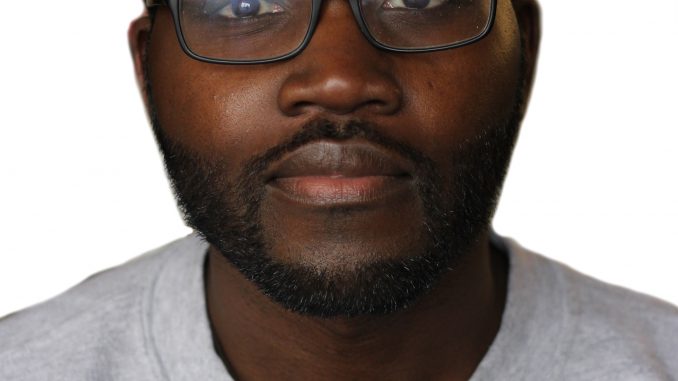
 Since 2003, Temple’s football team has shared Lincoln Financial Field with the Philadelphia Eagles. Next year, its lease will end and Jeffrey Lurie and Co. proposes they’ll raise the rent by $2 million per year, after $12 million up front.
Since 2003, Temple’s football team has shared Lincoln Financial Field with the Philadelphia Eagles. Next year, its lease will end and Jeffrey Lurie and Co. proposes they’ll raise the rent by $2 million per year, after $12 million up front.
In response, the Board of Trustees has begun talks—and even given the go-ahead for $1-million toward a design proposal and impact study—for a proposed 35,000-seat stadium in the mostly black and low-income neighborhood that borders the proposed site at Broad and Norris streets.
If they move forward, the stadium will stand as a monument of indifference toward black lives.
Community members have made it clear, through on-campus protests, that they don’t want stadium in their front yards, but President Theobald is feeling the pressure from the Eagles, who according to Forbes magazine, are worth $2.4 billion as of last September—a 37-percent increase from 2014.
At a student forum last month, organized by Temple Student Government, Theobald and Athletic Director Pat Kraft pled their case and answered questions.
“If we don’t build a stadium then we have to pay [the Eagles] a very large amount of money,” Theobald said.
The meeting ended early due to student protesters chanting, “Where is the community?”
Community members were denied access to the meeting—unless of course, they were students.
On March 10th, I went to a meeting for the “Stadium Stompers,” a student and community group fighting against the proposed stadium at The Church of the Advocate on 18th and Diamond streets. Residents, students and alumni gave testimonials and pledged allegiance to the cause.
Initially, I was looking to get a perspective for a piece that would cover all sides of the argument, but I couldn’t ignore that these are the people who live here. Their quality of life will be dramatically imposed upon. What other side is there?
In cities across America, gentrification—a transition of a neighborhood in which property values likely increase and displacement of residents is possible—is having a harsh impact on low-income, black and brown communities, too poor and depleted to fight back. From Brooklyn to San Francisco, developers are making a killing as native residents are being priced out of their homes, leaving some on the streets, the culture of communities erased.
The struggling community of North Philadelphia, where more than 50 percent of the residents live below the poverty line as of 2013, are in the crosshairs as Temple expands and attracts outside developers. According to the elder residents of the community, this is nothing new.
At the Stadium Stompers’ meeting, Paula Peebles, a Temple alumna and chairwoman for National Action Network—the group created and led by Rev. Al Sharpton—spoke about the community’s struggles with the university.
“It’s been a consistent fight with Temple University,” she told the audience. “Ever since I can remember, of age of knowledge, that we’ve been fighting Temple University, and that’s well over four decades, people!”
She later continued, “They have apartheid policies that are anti-African American community.”
She is not alone in her condemnation. Earlier in the proceedings, former Temple professor Dr. Anthony Monteiro—whose contract was not renewed in spring of 2014—is known for his outspokenness, and made accusations of his own.
“Let’s be real,” he said. “Temple University is an institution built upon the lie of white supremacy. And I say this not with joy, but with anguish. The Board of Trustees is about to carry out, if this thing goes through, an act of white supremacy never before seen in this city.”
That’s a heavy indictment, but I agree.
Since the 1960s, North Philadelphia has been a predominantly low-income, black neighborhood. Like most communities of its kind, racist government policies and discrimination coupled with the flight of industry that supported many residents, denied them access and opportunities like loans and mortgages, that would have helped the community flourish. As a result, it fell into the despair of crime and poverty, being referred to as “blighted” by the city.
Through the 20th century until now, Temple has been redeveloping Main Campus and portions of the surrounding area. Historic buildings and homes were demolished years ago to make way for expansion.
In the mid-1960s, Temple’s demolition of rowhomes at 13th and Norris streets left many poor black families displaced.
Today, North Philadelphia still has a bad reputation, and Temple is doing little to help change that. Temple student and 15 NOW member Becky Cave told the audience that before she arrived on Main Campus she was warned to “watch out and alert police of suspicious locals.”
Locals—not people or persons, but locals. At her orientation, she said she was told the people were “scary.”
It appears that Temple—as an institution, not in its function as a college—doesn’t care about its North Philadelphia neighbors. At the February forum, for which the specific function was to answer questions about the stadium, community members—you know, those people who will have to deal with the noise, parking and possible post-game “celebrations”—were denied access unless they were card-carrying Temple students.
Who can blame Theobald for trying to save money? Business is business. However, for Temple, business is often done at the expense of burdening black lives.
Darryl Murphy can be reached at darryl.murphy@temple.edu.


Nice article, I find it relevant to mention that the proposed stadium is estimated to cost over $120 million to complete. The price of rent at Lincoln financial is pennies in comparison.